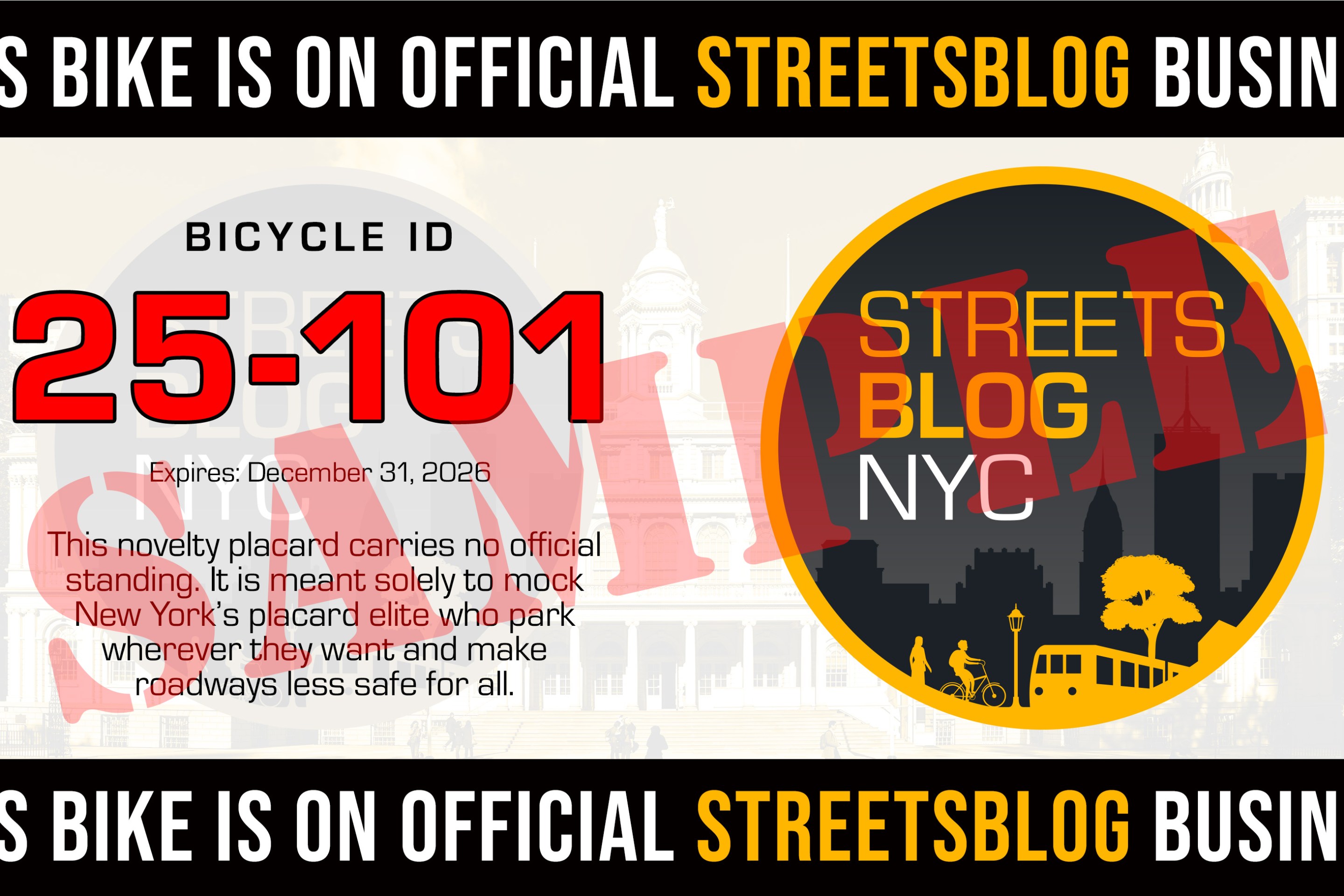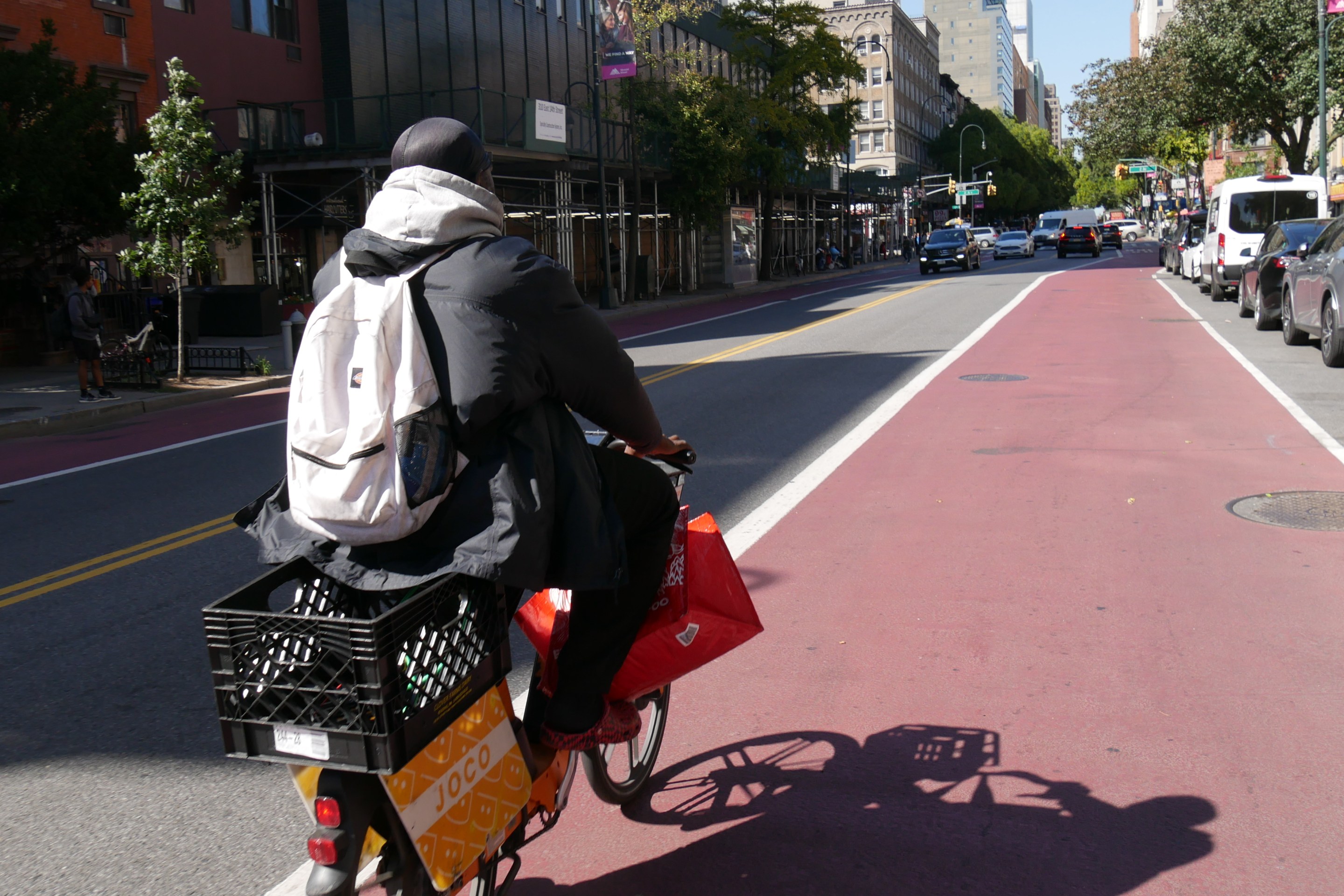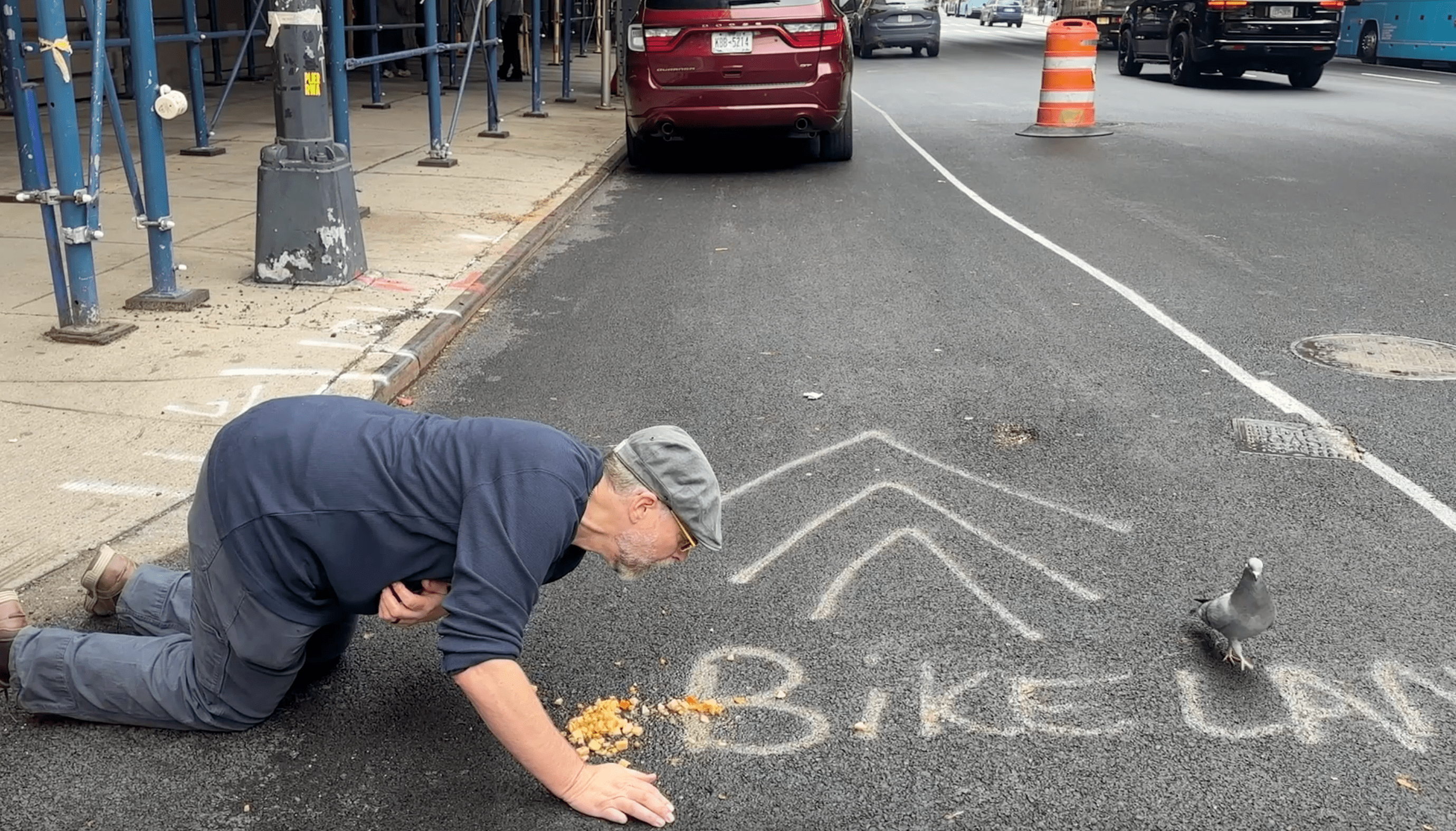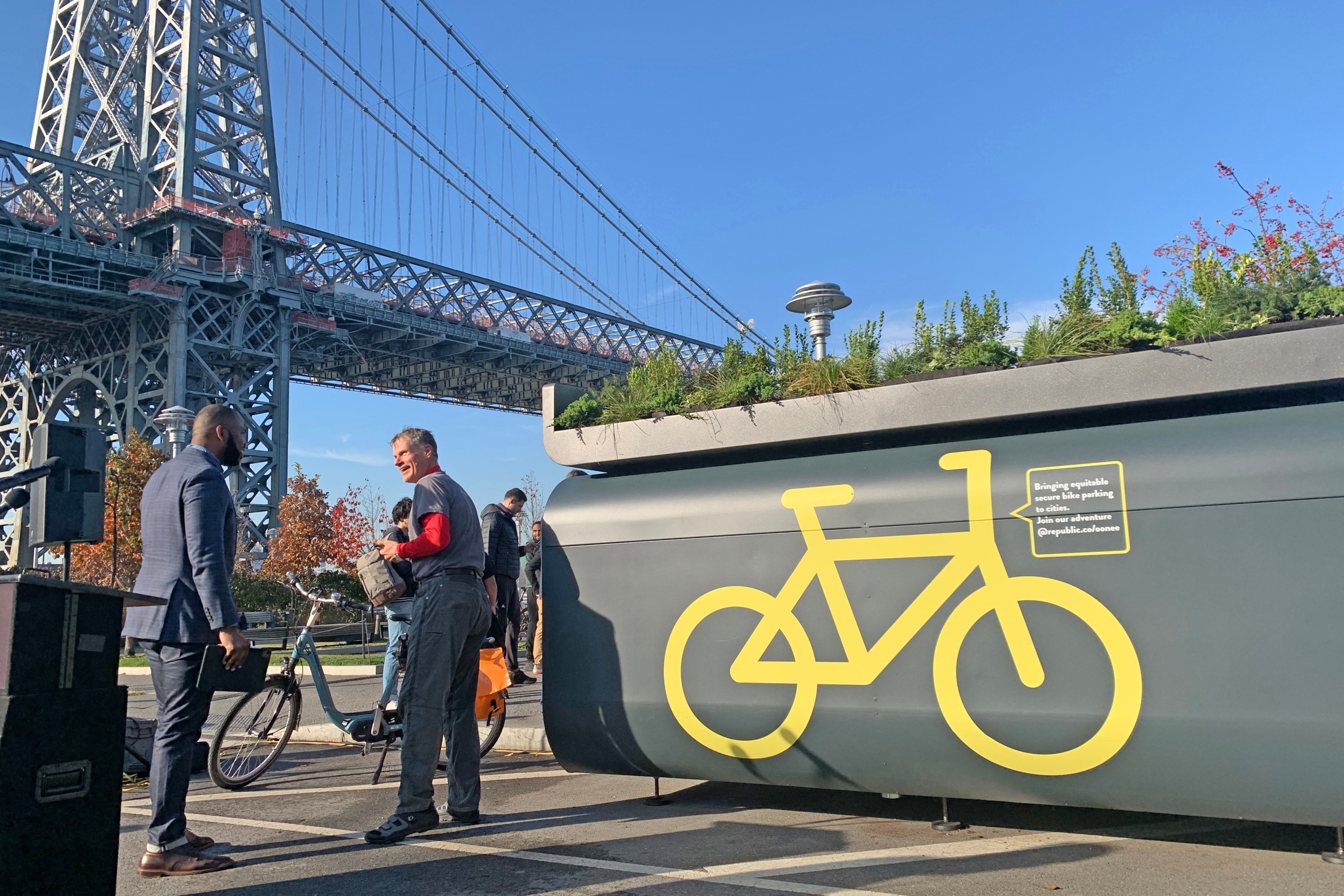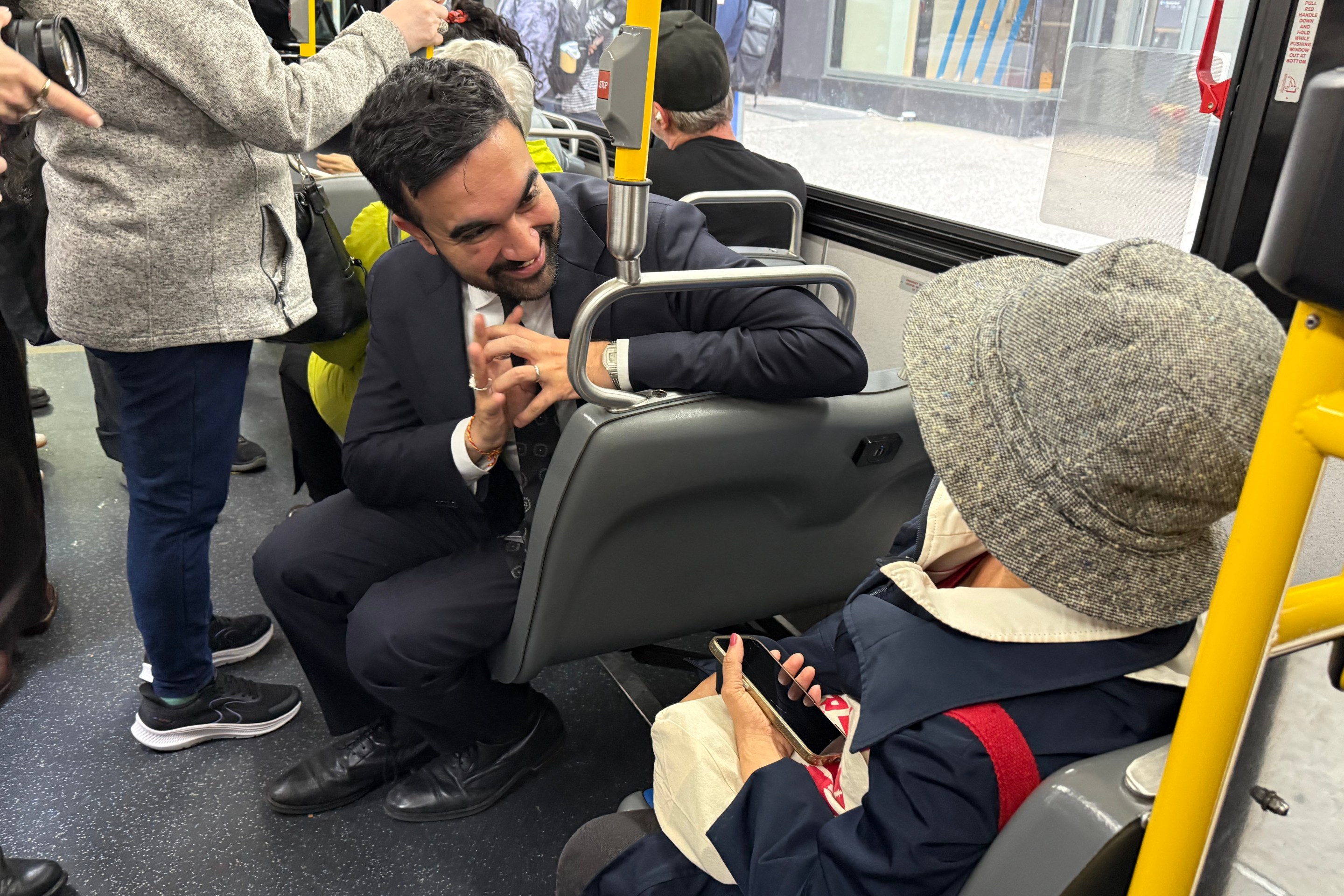
This essay is part of Streetsblog's "Car Harms" series, a package of stories designed to remind policymakers and the public of the hidden costs, dangers, inefficiencies and just plain old sadness that come from building our city around the needs of drivers. Auto-dependency has undermined the joy and beauty of our great urban spaces, and that must change. Click here to read the full series.
And if you are moved to make a small donation to keep series like these going in the future, please click here.
In 2023, two-time Surgeon General Dr. Vivek Murthy declared loneliness to be a national epidemic. The proclamation was backed by a well-researched, 82-page advisory report, which was released just as the worst viral impacts of the COVID-19 pandemic began to fade and the longer-term effects — like increased social isolation — were becoming known.
In his opening letter, Dr. Murthy points to potential dangers, calling America’s decline in social interaction a major threat to our health and well-being. To emphasize the point, he referenced a 2017 study published by American Psychologist that found, “the mortality impact of being socially disconnected is similar to that caused by smoking up to 15 cigarettes a day.”
Yikes.
Most recently, an avalanche of five-year pandemic retrospectives has outlined the ways Covid-19 altered our lives, including the acceleration of what journalist DerekThompson calls the “anti-social century.” We are simply spending more time at home, often alone, and less time out in our physical communities. But this trend is not a recent one, no — it quite possibly was already well underway in the mid-20th century. Indeed, Robert Putnam’s seminal 2000 book, Bowling Alone: The Collapse and Revival of the American Community, asserts that our nation’s social capital, once the envy of the world, began to decline in 1950.
For frequent Streetsblog readers and urban history buffs, this lines up with a related trend that began around the same time: the gutting of the American city in favor of highways and the auto-dependent, anti-social suburb. By 1960, more and more of the American metropolis began to resemble “Futurama,” the General Motors-sponsored 1939 World’s Fair exhibit that envisioned America as a dispersed nation humming happily along the freeway among home, work, and leisure locations. Backed by a growing tangle of federal, state, and local land-use and transportation policies, tight-knit and walkable communities were outlawed in favor of building places where social interactions are not impossible, but more difficult to come by.
By 1981, Donald Appleyard’s groundbreaking book, Livable Streets, highlighted how dystopian the “Futurama" vision turned out to be. The injurious environmental, public safety, and economic impacts of transitioning to a nation that drives everywhere for everything is now well-documented, but Appleyard included a prescient look at what happens at the block-scale when we give our streets over to motor vehicles.
Studying a variety of San Francisco’s streets, he found a clear correlation between traffic volumes and social connections; people living on thoroughfares with low-volumes of traffic had much more social relationships on their block — no matter how casual — than people living along streets with moderate- or high-traffic volumes. As traffic increases, it seems, social life breaks down first between those living on opposite sides of the street:

In New York City, multiple generations of advocates have long pushed public officials to continue a nation-leading, but tedious, effort to decongest our streets and claw back car space for public space and other forms of clean and shared transportation. Current threats from the Trump administration notwithstanding, our city leaders and various agencies should be credited for advancing some transformative policies and street redesign projects. Many look to Gotham as a model. However, compared to our international peers, we should be gearing up to do much, much more given the “spatial dividends” being paid out by the MTA’s successful congestion pricing program.
For the past decade, this work has occurred under the quantitative rubrics of Vision Zero. However, outdoor dining, open streets, plazas, and low-volume residential street designs should be understood as a qualitative prescription not just for safer streets but for increased joy, social and cultural connections, and a healthier local economy. This is not the only way New York City can continue to combat the loneliness epidemic, but these are highly effective and low-cost tools for counteracting all sorts of societal ills.
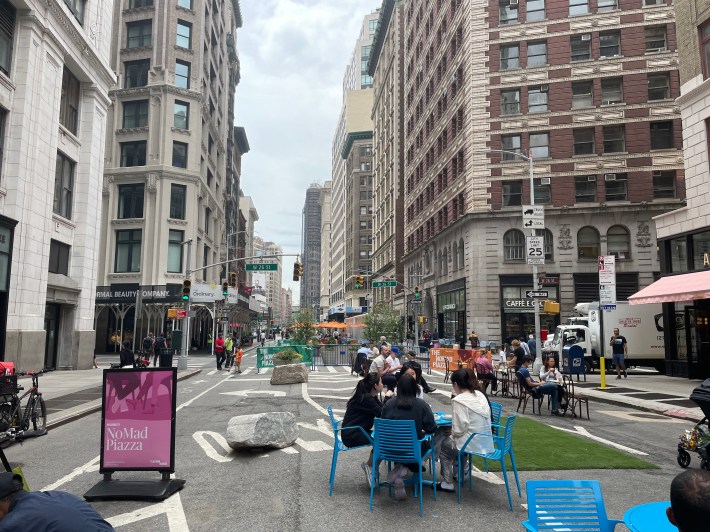
Elsewhere in the United States, vehicular travel has bounced back and beyond pre-pandemic levels. A business-as-usual approach will surely lead to more car harms, including increased isolation, a feature long baked into America’s land use and transportation policies. On the ground, this means, parents or other caregivers will continue to drive kids to school, depriving them of the social and health benefits that come from walking or biking. It means that more seniors will remain isolated from others, underscoring the findings of a 2023 University of Michigan survey that found that a full 34 percent of people between 50 and 80 have infrequent social contact with others outside of the home.
Double yikes.
To be fair, transportation and land-use policy is not the only cause of our social isolation. Professor Jonathan Haidt’s Anxious Generation hits back at smartphones and social media as being neither, especially for young adults.
And the sustained work from home trend or the sheer economic stress that leaves many Americans unable to afford (time or money) to pursue being with others is surely playing a role. Some signs of change? Online dating made major inroads in the 2010s, but may be losing its shine amongst a new generation of dating adults, and AmeriCorps says volunteerism is back, so maybe there is hope for newer generations who are more eager to ditch isolation for good ol' IRL time spent with others?
But back to the central cause of Streetsblog readers, no amount of AI will replace the knowledge we already have to create the places where people love to connect.
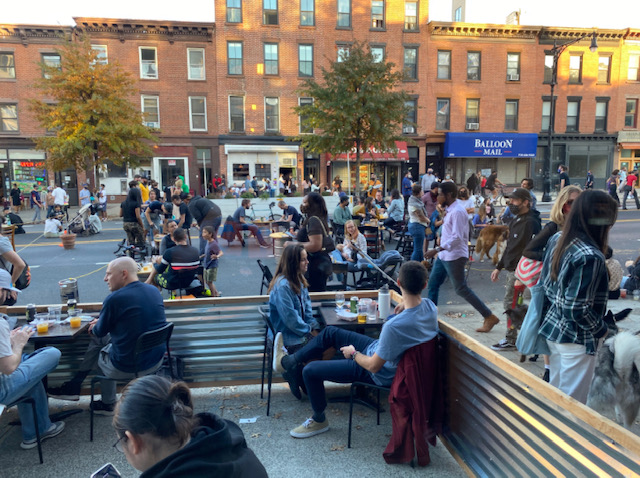
And if you are like me and agree Murthy correctly diagnosed the problem, you might also be asking about the solutions.
The 2023 advisory puts forth six pillars for action. You should read them all, but the first calls for strengthening social infrastructure in local communities with design of the built environment that promotes social connection: “Many factors that influence social connection are environmental. Decisions about the layout of our cities, from the usability and reach of public transportation to the design of housing and green spaces, have a direct effect on social interaction in a community.”
I’d underscore the traffic, too.
Cities can be lonely places, but they can also be incubators of social cohesion. Cities with good density (of people and destinations); connected, walkable streets; and an array of public transportation options that bring us into frequent and close contact with others become the proof of Appleyard's graphic.
Indeed, are some of the factors that make New York City one of the safest places to live in America and a place where residents historically live longer than the American average. The reasons are varied, but generally New Yorkers are less likely to smoke “loneliness cigarettes” than those living in other, more disconnected, auto-dependent locales.

But as I reflect on my own social experiences living in New York City, some of what Appleyard observed over 40 years resonates. Many of my casual social relationships are the result of connecting with people inside an apartment building or outside along the side of the street on which I live. For example, on Waverly Avenue, I’d always wave to the elderly woman routinely watching the world from her stoop while I set out for a 7 a.m. run on the Brooklyn Greenway. Over on Court Street, the bodega owner below our apartment knew us so well that he remarked on my wife’s first pregnancy before we had told anyone. And now, after two years of living on Monroe Street, the neighbors we’ve become routinely social and friends with live on our side of the block. Our kids increasingly know each other and meet up for impromptu sidewalk bike rides and play. There are kids on the other side of the street, but we so far only know one family.
Why?
Monroe Street is not heavily traveled, but people driving sometimes go way too fast. Our block is long and the street is one-way, but also wide enough for two-way traffic. This encourages speeding, including by our neighbor four doors down who likes to cosplay The Fast and the Furious. So we almost never cross mid-block and have the opportunity to build the type of casual interactions that so readily blossom into social relationships.
The specter of traffic violence keeps us on our side of the street.

